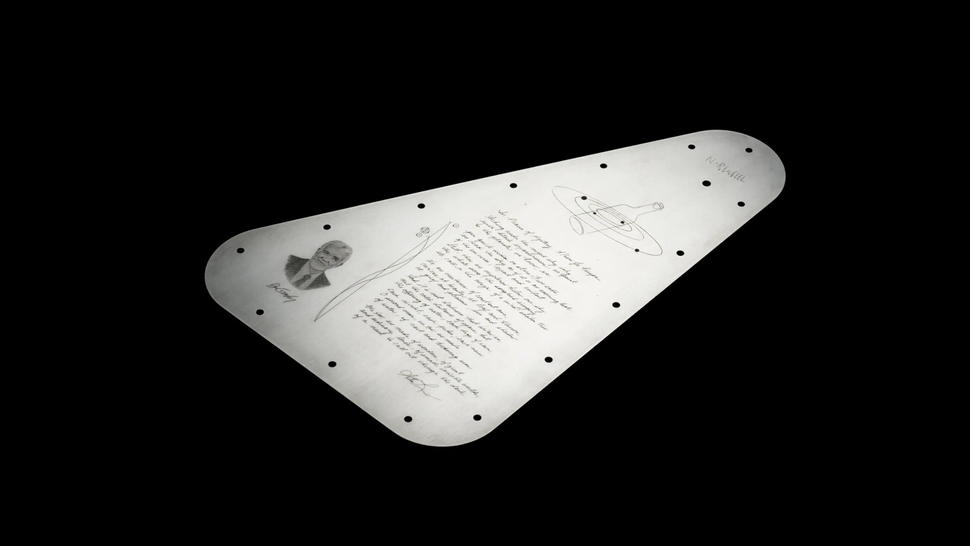Europa holds twice the amount of water as all of Earth’s oceans combined.
Key Takeaways
- NASA is sending a cryptic human message to Europa, Jupiter’s icy ocean moon.
- The message includes 2.6 million names and a symbolic poem stenciled on a microchip.
- A commemorative plate features waveforms from “water” in 103 languages and radio references.
- Europa Clipper’s mission aims to explore Europa’s subsurface ocean for signs of life.
- The spacecraft will orbit Jupiter in 2030, conducting 49 flybys of Europa.
_______

A Message Across the Universe
NASA has announced an extraordinary project as part of its upcoming Europa Clipper mission: sending a cryptic human message to Europa, one of Jupiter’s most intriguing moons.
The message, encoded on a microchip the size of a dime, includes a handwritten poem titled In Praise of Mystery: A Poem for Europa by U.S. Poet Laureate Ada Limón. This microchip is part of a commemorative plate, a 7-by-11-inch tantalum panel adorned with designs that emphasize the connection between Earth and Europa.
The outward-facing side of the plate displays sound waveforms from people saying “water” in 103 languages, while the inward side includes visual references to radio frequencies used for interstellar communication. These designs reflect humanity’s fascination with water as a universal symbol of life and connection.
Europa’s Potential and the Mission’s Goals
Europa, believed to contain an ocean beneath its icy surface, is a prime candidate for the search for extraterrestrial life. Scientists estimate this ocean holds twice the water volume of all Earth’s oceans. The Europa Clipper spacecraft will embark on a 1.8-billion-mile journey, reaching Jupiter by 2030. It will conduct 49 close flybys of Europa, collecting crucial data about its ocean, icy crust, atmosphere, and space environment.
The mission has scientific and symbolic significance. Although recent findings from NASA’s Juno mission suggest Europa may lack enough oxygen to support life, the Europa Clipper will provide more definitive answers. Beyond its scientific goals, the commemorative plate serves as a testament to humanity’s curiosity and creativity, blending science, art, and language into a message for the cosmos.
Project scientist Robert Pappalardo described the plate’s intricate design as embodying the decades-long journey of this mission. Lori Glaze, director of NASA’s Planetary Science Division, highlighted the plate’s central theme: Earth’s connection to Europa through water, which is essential for life as we know it.
As the spacecraft sets off next year, the Europa Clipper mission symbolizes humanity’s enduring quest to understand our place in the universe while showcasing the best of what Earth has to offer.





